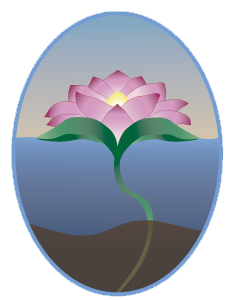Ayurveda’s definition of health goes far beyond the absence of disease. It defines health in terms of balance, proper formation, well-functioning systems and includes bliss of the mind, soul and senses. It is a very powerful and inspiring statement of what health can look like. Daily self-care, proper diet for your constitution and for the season, yoga, breathwork, appropriate exercise for your type, as well as herbs are all a part of maintaining this state of health. When this balance is disturbed, we can easily return the body to balance if we catch it in the beginning stages. However, when it progresses into later stages it becomes more difficult to correct and eventually becomes the roots of disease.
The Six Stages of Samprapti
The process of disease formation (samprapti) in Ayurveda follows six stages.
- In the first stage, the doshas accumulate in their home site and cause minor discomforts: Vata in the colon, pitta in the small intestines, and kapha in the stomach.
- In the second stage, the increased doshas become provoked and develop stronger symptoms, but they remain in their proper container. These two stages are easily rebalanced.
- Once the doshas start to spread in the third stage, then it becomes increasingly difficult to rectify. Doshas leave their main site in the body and symptoms manifest in other locations.
- In the fourth stage, the imbalanced doshas find a weak space in the body to manifest and now the stage is set for disease to manifest.
- In the fifth stage, western medicine can detect and name a disease from its symptoms.
- Finally, disease destroys tissues, disturbs function, and creates complications in other tissues or organs in the sixth stage.
If we understand how disease progresses then we can also determine how to reverse the process.
Panchakarma Therapy
When health has been disturbed then Ayurveda recommends panchakarma therapy. This is believed to purify or cleanse all the body tissues, bring about harmony of the three doshas (tridosha), and balance the doshas of the mind- sattva, rajas, and tamas- to obtain long- lasting beneficial effects. Panchakarma is not merely a therapeutic regimen, but it is also considered a management tool to promote and preserve an individual’s health.
In Ayurvedic management of disease, the fundamental concept is to eliminate the vitiated doshas from the body in order to impact disease. Panchakarma is designed to remove the toxic materials/ vitiated doshas through five (pancha) main actions (karma). This internal purification is carried out through:
- Emesis (vamana)
- Purgation (virechana)
- Enema (basti)
- Errhines (nasya)
- Therapeutic bloodletting (raktamokshana).

